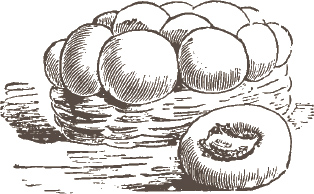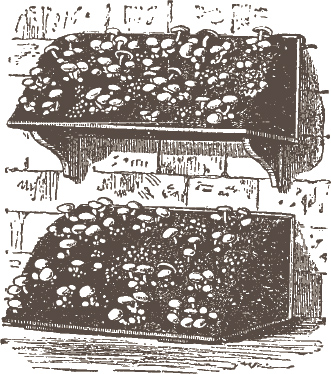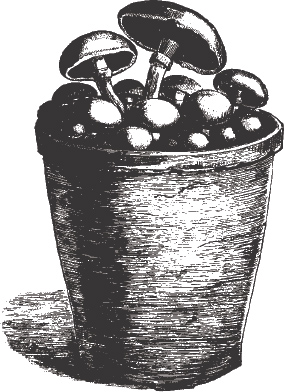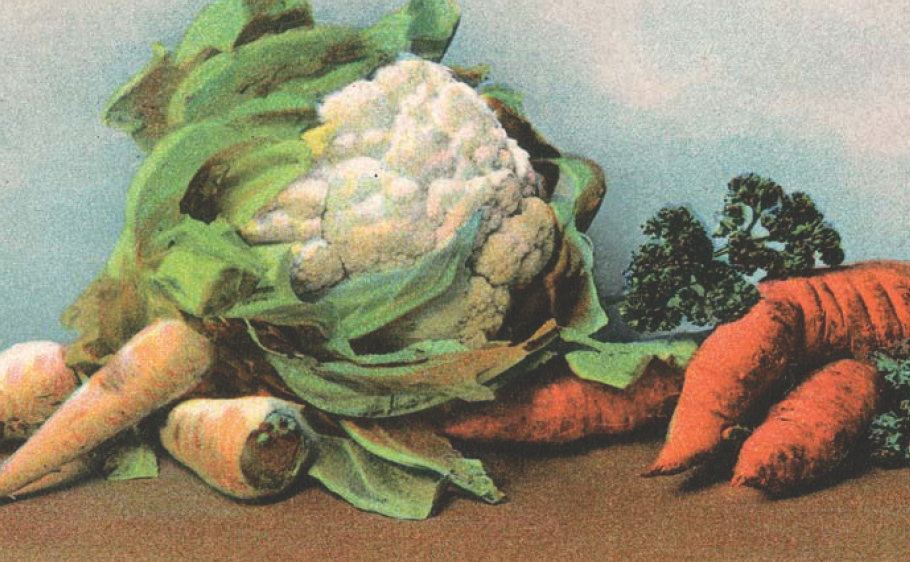 Mushrooms
Mushrooms 
 Mushrooms
Mushrooms 
AMATEURS commonly regard the cultivation of mushrooms as something beyond their powers, and a kind of horticultural mystery especially reserved to the skill of professional gardeners. It is true a few bold spirits have ventured to undertake the task, but the results have not always been satisfactory to themselves, or encouraging to others who might be disposed to try similar experiments. Yet there are no greater difficulties to overcome than in other departments of gardening, in which amateurs have creditably won conspicuous victories in contests with more experienced rivals.
 The Essentials
The Essentials 
Many useful first lessons in the conditions which govern the growth of mushrooms have been learnt in our fields, where the wild form abounds in early autumn; in fact, several large growers for market attribute their earliest successes to these simple observations. Two of the ruling factors are the temperature and moisture prevailing at the season when these funguses are produced naturally in the open. As soon as the right stage is reached they appear with a magical rapidity; but a sudden change to dry and hot, or cold weather, effectually checks the supplies, and perhaps stops them entirely. Again, apart from the state of air and soil as regards heat and moisture, it is found that some meadows are much more productive of mushrooms than others, which suggests that the quality and character of the soil, the manure present, and the nature or strength of the spawn – the equivalent of the seeds in other plants – have a bearing on the results, a theory in all respects supported by experience.


Mushrooms grown on shelves
Here then we have the A B C of mushroom culture, in the imitation by artificial means of natural conditions, which provide suitable moisture and an intermediate temperature, for excessive or deficient heat and moisture are alike inimical, while a sudden extreme change in one direction will arrest growth instantly. A medium, consisting of good soil and manure, is also essential, and added to this the best spawn, which will aid the cultivator in securing the most satisfactory returns for his labour and outlay.
 Where can Mushrooms be Grown?
Where can Mushrooms be Grown? 
This question might well be put in the form, ‘Where can mushrooms not be grown?’ as the positions suitable for the purpose are so varied that the choice is chiefly a matter of convenience. Sheds of all kinds, from the most primitive structure to the more elaborate, can be utilised at all seasons of the year. Cellars are ideal places as a rule, but when beneath houses that are occupied a consideration of the sanitary arrangements is necessary before embarking upon mushroom growing there. If the cellars are under out-houses or similar buildings, isolated from the portion occupied, it is another matter, and they can be turned to good purpose. Caves, or excavations in rocky hill sides, are also sometimes at command, and can easily be adapted to the cultivation of mushrooms; while old quarries, or disused surface mines, are equally available in certain districts. Around Paris enormous quantities of mushrooms are produced in old stone quarries. Railway arches have also been extensively employed in the same way.

Mushrooms grown in flower pot
Lastly, mushrooms can be grown in the open during every month of the year, if the right system be adopted, with the same certainty as under cover. The beds are cheaply and readily formed with the aid of a few boards, and it is possible, where space is too restricted for other methods, to have crops in large pots, tubs, or boxes, which may be purchased for a mere trifle. In fact, there are few gardens or yards in towns, suburbs, or villages where some odd corner could not be utilised in a trial of mushroom culture, and a savoury addition to the ordinary diet obtained at small expense. It must always be remembered, too, that the home-grown samples are free from the doubt respecting wholesomeness as food which not uncommonly attaches to those gathered in the fields and sold in shops or markets.
 Materials Needed
Materials Needed 
The only three essential materials are manure, soil, and spawn, but as each of these demands close attention to ensure success, the important points will now be detailed.
Manure – This is indispensable as a source of heat, and to supply a medium in which the mycelium, or spawn, can extend and the mushrooms develop. The most suitable is that from stables where the horses are well fed and littered with straw; peat-moss and other substitutes for the latter are useless to the mushroom-grower. Collections of horse-droppings on macadamised or stone-made roads are suitable if mixed with a good proportion of short litter – say two-thirds of the litter to one of the dung – but manure gatherings from wooden paving, tar, or asphalte are too unreliable to be recommended; while if the roads are newly made or recently repaired the manure is positively dangerous.
Soil – It is usually more difficult for dwellers in and around large cities to obtain good soil than it is to procure the right manure; the tendency, therefore, is to use ordinary garden mould, which, in most instances, is quite unsuitable, for many reasons. The ideal material is that obtained from just beneath the grass in a meadow or good loam, neither very heavy nor extremely light, and where that is not procurable endeavour should be made to secure the nearest approach to it. In any event, let the loam be fresh, and avoid the stale soil of old gardens.
Spawn – The brown dust which is seen under fully grown old mushrooms consists of minute oval bodies termed spores, which perform a function similar to that of the seeds of flowering plants, though differing in structure and mode of development from them. From these spores is produced the gray or whitish filamentous cobweb-like growths that constitute the “spawn” upon which the majority of modern growers have to rely for the production of mushrooms. In the earlier days this was collected from the fields where the fungus was known to grow naturally, but at the present time it is manufactured on a large scale by specialists who have become noted for their success.

English spawn is commonly sold in the form of flat oblong slabs, termed bricks, which measure 8 to 9 inches long, 5 to 5½ inches wide, and 1¼ to 1½ inches thick. These bricks are composed of manure and soil permeated with the mycelium of the mushroom that has reached a certain stage in its development, in which it can be retained ready for use during several years if carefully stored in a dry, cool place.